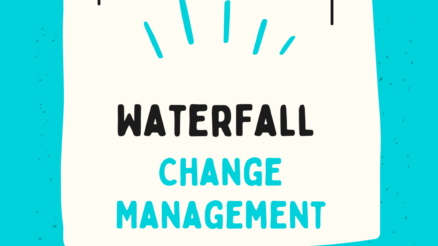There is always a risk when organizations are implementing changes to their IT systems and infrastructure.
Business leaders and IT team are anxious about that risks because if something goes wrong it may cause technical and financial loss.
This is why risk assessment is an essential component of ITIL change management.
In this blog post, we will explore the process of risk assessment in ITIL change management, including how to identify, evaluate, and mitigate potential risks, as well as the importance of communication and documentation.
Let’s read on
What is ITIL change management risk assessment?
ITIL (Information Technology Infrastructure Library) change management is a process that organizations follow to control and manage changes to their IT systems and infrastructure. The goal of ITIL change management is to minimize the negative impact of changes on business operations, while also ensuring that changes are properly planned, tested, and implemented.
ITIL change management process also includes a risk assessment process to identify and evaluate the potential risks associated with a change. This process helps organizations determine the likelihood and impact of potential risks, and take appropriate actions to mitigate or control those risks.
Why it is important to do risk assessment in ITIL change management?
Before making ITIL change request and going for formal ITIL change approval, assessment of risk are crucial for successful implementation of ITIL change.
By performing a thorough risk assessment before implementing a change, organizations can identify any potential issues and take steps to minimize or eliminate them. This can include developing mitigation strategies, such as creating backups or testing changes in a controlled environment, or implementing control measures, such as additional monitoring or user training.
Furthermore, risk assessment helps organizations prioritize the changes that need to be made based on the level of risk they pose. This enables the organization to focus on the changes that are most critical to the business, while managing the risks associated with them.
Moreover, Risk assessment is an ongoing process and should be regularly reviewed and updated as the organization’s environment and objectives change.
Overall, risk assessment in ITIL change management is critical for ensuring the stability and reliability of an organization’s IT systems, and for minimizing the potential negative impact of changes on business operations.
ITIL Change Management Risk Assessment Process
Risk assessment process involves mainly three steps: Identification of potential risks; evaluating the likelihood and impact of identified risks and prioritization of risks based on likelihood and impact. But here it is also relevant to discuss development of mitigation strategies and their implementation and most importantly how to communicate risks to all stakeholders.
Let’s discuss each of these
1. Identification of potential risks
The identification of potential risks involves identifying and listing all the possible risks that could arise as a result of the proposed change.
There are several methods that can be used to identify potential risks, including:
Brainstorming: A group of individuals with relevant knowledge and experience come together to identify potential risks.
Checklists: Standardized checklists are used to identify potential risks based on past experience or industry best practices.
Root cause analysis: This method looks at the underlying causes of past incidents or problems to identify potential risks.
SWOT analysis: This method looks at the organization’s strengths, weaknesses, opportunities, and threats to identify potential risks.
Impact analysis: This method looks at the potential impact of a change on different areas of the organization, such as operations, security, or compliance, to identify potential risks.
During the identification of potential risks, it is important to consider the different types of risks that may arise, such as technical risks, operational risks, and compliance risks.
It is also important to involve individuals from different departments and with different levels of knowledge and experience in the identification process to ensure that a wide range of potential risks are considered.
2. Evaluating the likelihood and impact of identified risks
Once potential risks are identified, the next step is to evaluate the likelihood and impact of those risks, in order to prioritize them and develop appropriate mitigation and control measures.
This step involves determining the probability of each identified risk occurring, as well as the potential impact on the organization if the risk were to occur.
To evaluate the likelihood of a risk occurring, organizations can use techniques such as:
Probability estimates: Assigning a numerical value to the likelihood of a risk occurring, such as “low”, “medium”, or “high”.
Scenario analysis: Identifying possible scenarios that could lead to the risk occurring and assessing the likelihood of each scenario.
To evaluate the impact of a risk, organizations can consider factors such as:
Financial impact: The potential costs associated with the risk, such as lost revenue or increased expenses.
Operational impact: The potential disruption to business operations, such as service outages or delays.
Compliance impact: The potential impact on compliance with laws, regulations, or industry standards.
Reputational impact: The potential impact on the organization’s reputation or brand.
3. Prioritization of risks based on likelihood and impact
Prioritizing risks based on likelihood involves determining the priority of each identified risk based on the level of risk they pose to the organization.
The most common method of risk prioritization is to create a risk matrix, where the likelihood of a risk occurring is plotted against its potential impact. Risks that fall in the high likelihood and high impact quadrant should be given the highest priority, as they pose the greatest risk to the organization. Risks that fall in the low likelihood and low impact quadrant can be given lower priority.
Another way to prioritize risks is by using a scoring system, where a score is assigned to each risk based on its likelihood and impact. Risks with higher scores would be considered higher priority.
Additionally, organizations can also use other factors such as the urgency of the change and the risk tolerance of the organization to prioritize risks.
4. Development of strategies to mitigate or control identified risks
After identifying and prioritizing potential risks in the ITIL change management process, the next step is to develop strategies to mitigate or control those risks.
Mitigation strategies aim to reduce the likelihood or impact of a risk, while control strategies aim to manage the risk if it does occur.
Here are a few examples of mitigation and control strategies that organizations can use to manage risks:
Creating backups: This can help ensure that data can be restored in the event of a risk occurring.
Testing changes in a controlled environment: This can help identify and resolve any issues before the change is implemented in a production environment.
Implementing redundancy: This can help ensure that critical systems or services can continue to function in the event of a risk occurring.
Implementing additional monitoring: This can help detect and respond to risks more quickly.
Developing incident response plans: This can help organizations respond quickly and effectively to risks that do occur.
Providing user training: This can help ensure that users know how to use systems or services in the event of a change.
The development of mitigation and control strategies should involve individuals from different departments, such as IT, operations, and business, to ensure that a wide range of perspectives and expertise are considered.
Once the strategies are developed, they should be implemented, and regularly reviewed and updated to ensure that they are still effective in managing the risks.
5. Implementation of these strategies
Implementing the strategies is about taking the necessary steps to put the strategies into action and make them operational. This includes:
Assigning responsibilities and tasks: Identifying and assigning the people, departments, or teams responsible for implementing the strategies.
Allocating resources: Identifying and allocating the necessary resources, such as budget and personnel, to implement the strategies.
Developing and communicating procedures: Developing and communicating procedures and guidelines for implementing the strategies, to ensure that they are implemented consistently and correctly.
It’s important to note that the implementation process should be closely coordinated with the change management process, to ensure that the change is implemented correctly and that the strategies are in place before the change is made.
6. Communication of risk assessment findings to relevant stakeholders
Communication of risk assessment ensures that all stakeholders are aware of the risks associated with a change and are able to take appropriate actions to manage those risks.
The communication process typically involves:
Identifying stakeholders: Identifying all stakeholders who may be impacted by the risks associated with the change, including individuals or departments within the organization, as well as external stakeholders such as customers or partners.
Communicating the findings: Communicating the findings of the risk assessment process, including the identified risks, their likelihood and impact, and the control measures that have been implemented to manage those risks.
Providing regular updates: Providing regular updates on the status of the risk management process, including any new risks that have been identified or any changes to the control measures.
Encouraging feedback: Encouraging feedback from stakeholders on the risk assessment process and the control measures implemented, to ensure that the process is effective and that all stakeholders are aware of the risks and the measures taken to manage them.
Communicating the outcome of the change: Communicating the outcome of the change, including any issues that arose, and the actions taken to address them.
Effective communication of risk assessment findings to relevant stakeholders helps build trust and understanding, and allows stakeholders to plan and prepare for potential risks.
Final Words
By performing a thorough risk assessment before implementing a change, organizations can identify bottlenecks and threats to implementation of IT related changes. The findings of risk assessment contribute to developing of mitigation strategies to overcome the potential risks of implementing changes in IT system and infrastructure. Therefore, organizational stability and reliability of its IT system largely depends on how effectively risk assessment is undertaken.



